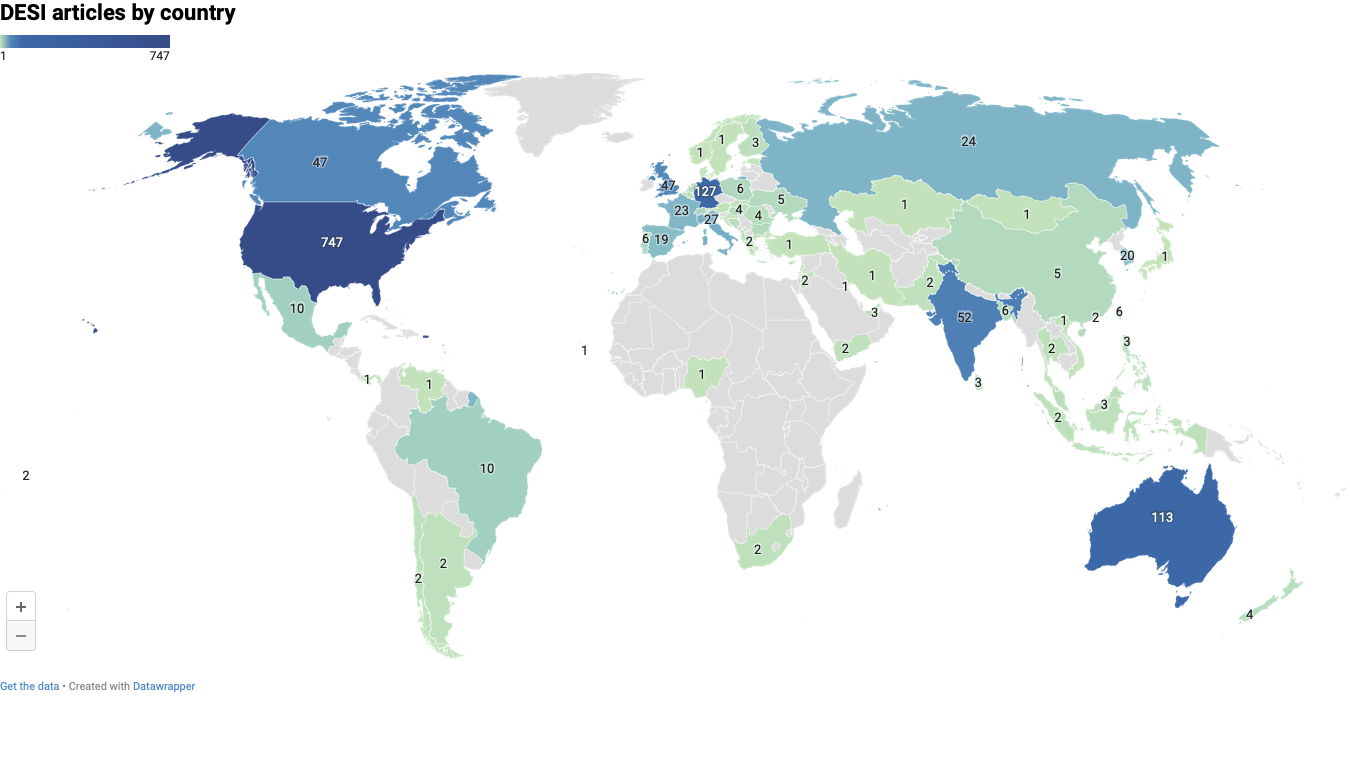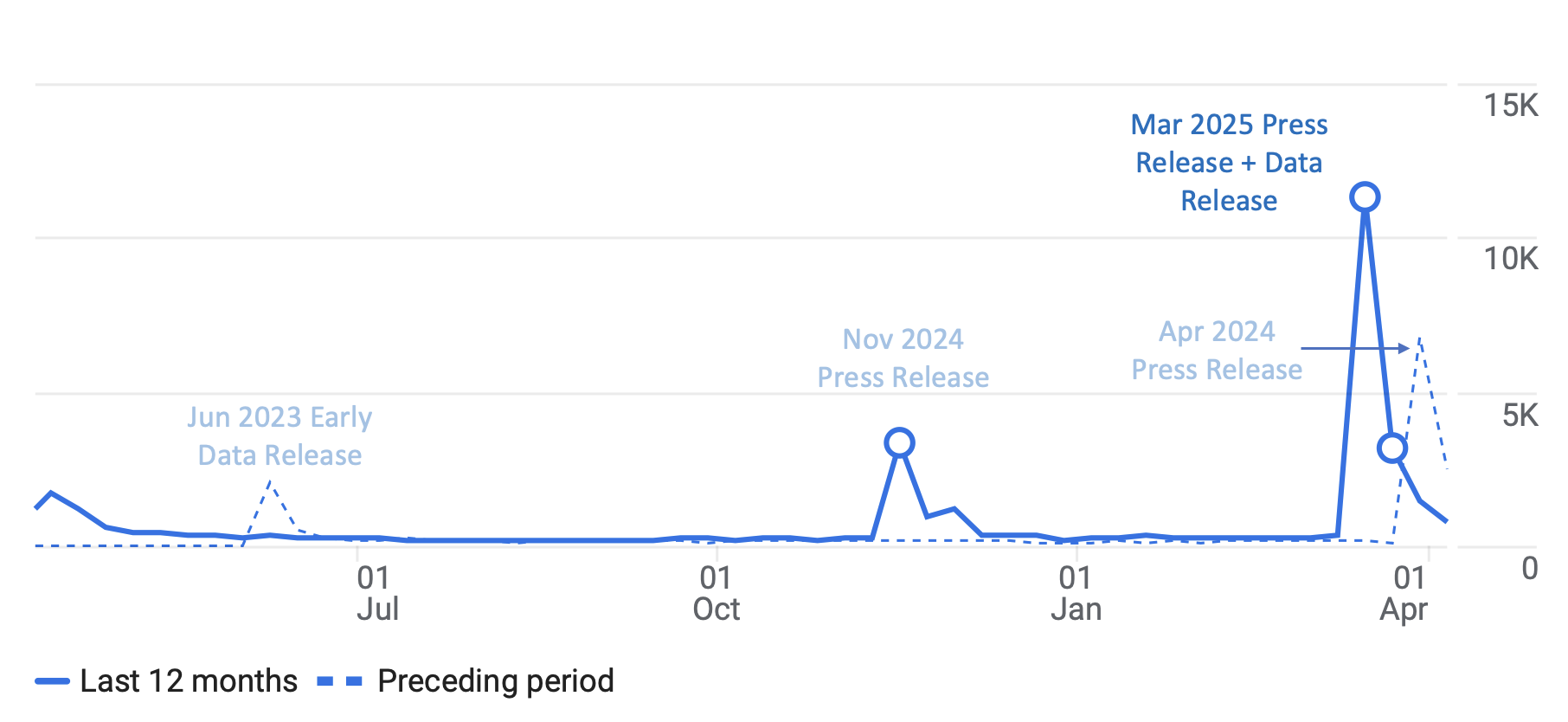Data and Analysis also in Demand
by Joan Najita (NOIRLab)
14 April 2025
DESI’s 19 March 2025 press release, which reported the likelihood that dark energy is evolving, sparked excitement and engagement across the globe, from both the general public and the scientific community. Announced by Berkeley Lab and 23 collaborating DESI institutions that published partner releases, the news led to significant media coverage.
As of 27 March 2025:
- More than 1,500 articles reporting the news had appeared worldwide in 67 countries.
- Dozens of the world’s most respected science news and media outlets covered the story.
- Articles appeared in 35 languages, with one quarter of the articles published in a language other than English.

For Berkeley Lab Science Writer Lauren Biron, who organized the press release effort for the collaboration, “It was a real privilege to be trusted with DESI’s secrets ahead of time, and to play a small part in telling DESI’s story. The collaboration put such effort and care into the results and the announcement, so it was gratifying to see DESI’s news spread far and wide. This is certainly one of the most far-reaching results I’ve ever been involved with as a science writer.”
Biron attributes part of the media success to the beautiful visualizations of the DESI data created by NOIRLab, Fiske Planetarium, and DESI’s Claire Lamman: “Those maps and flythroughs of the galaxies conveyed at a glance the impressive scope of the experiment, and evoked a sense of wonder and awe at our universe. They made it easy for folks to get excited about the science.”

In creating his visualizations, color selection was important to NOIRLab’s Ron Proctor, who found the white-to-blue color scheme best at highlighting the intricate structure in the DESI dataset. The color scheme also evokes a connection to human experience. To DESI Director Michael Levi, the color scheme suggested “the white surf of the nearby galaxies and the deep sea of those faraway.” Surprised and delighted to see his work featured in the New York Times and on the cover of Le Monde, Proctor says, “It feels good to know I’ve contributed to something that is so meaningful and effective.”
The media coverage surpassed even that of last year’s April 2024 press release. While the earlier release, which reported the first hints of evolving dark energy based on the first year of DESI data, had been widely covered in the media, this year’s release, which reported results from the first 3 years of DESI data, generated more news articles (1500+ vs. 1200+) in more languages. It also resulted in much higher engagement (the number of likes, shares, and comments on those articles received online): a whopping 191,000 this year vs. 32,000 last year.
Beyond the media coverage, the response from the scientific community has also been strong, with the DESI papers reporting the science results and the Year-1 data release attracting a lot of attention.
As of 9 April 2025,
- 575 TB of data have been downloaded from the NERSC, the Berkeley Lab computing facility (with 197 TB downloaded directly from data.desi.lbl.gov, and 378 TB using globus to access the NERSC data transfer nodes).
- 15,000 new users have visited data.desi.lbl.gov.
- The 3 science papers reporting the main results have been downloaded 21,500 times from data.desi.lbl.gov/doc/papers, and potentially many more from the arXiv preprint server.
- Value Added Catalogs provided by the science collaboration in association with the data release have been downloaded 12,000 times.

With the potential to spark completely new ideas and applications than those they were originally designed to address, who knows what new discoveries will emerge from these DESI data?!
Note: Sincere thanks to Stephen Bailey (Berkeley Lab) for compiling and sharing the data usage statistics.